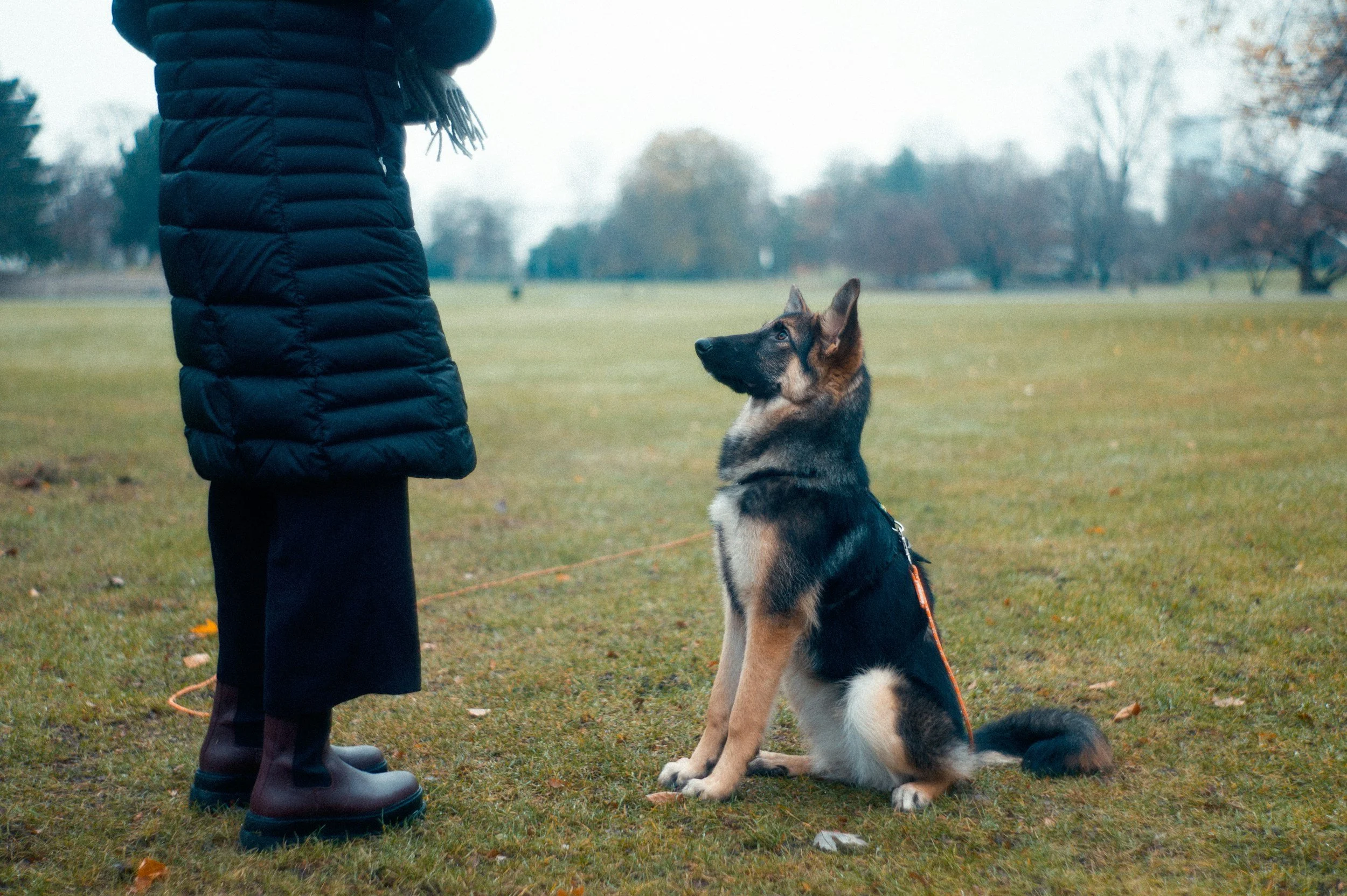Balanced Dog Training: What It Is, Why It Works & How It Aligns with Holistic Training
Balanced training creates clear communication, builds trust, and helps dogs thrive—because training should be fair, not controversial.
What is Balanced Dog Training?
Balanced training is an approach that uses both positive reinforcement (rewarding desired behaviors) and corrective guidance (discouraging unwanted behaviors) to create clear, fair communication between dogs and their owners. It allows trainers to effectively teach obedience, manners, and boundaries while ensuring the dog understands what is expected. "Balanced training isn't about being harsh—it's about being fair and clear. It mirrors the way dogs naturally communicate with each other, using both rewards and corrections to establish rules and boundaries," explains Denise Bozenski, owner of Fetch This Canine.
Learn more about Denise HERE!
Why Balanced Training Works
Dogs don’t learn in a vacuum. In their natural social structure, they receive both praise and correction from other dogs. Balanced training provides that same level of clear communication, reducing confusion and frustration while making learning easier.
Benefits of Balanced Training:
- Effective Communication: Dogs understand both what to do and what not to do.
- Faster Results: Clear expectations help dogs learn commands and behaviors more quickly.
- Suitable for All Dogs: Whether working with a high-energy puppy, a stubborn adolescent, or a reactive adult, balanced training adapts to the individual dog.
- Builds Trust & Confidence: Dogs thrive when they understand boundaries, making them more confident and secure.
- Prepares for Real-World Situations: Balanced training doesn’t just work in controlled environments—it prepares dogs to respond to commands in everyday situations, even with distractions.
Denise says, "A well-trained dog isn't just obedient—they're confident, happy, and relaxed because they understand the rules of their world."
Learn more about how your stress can affect your dogs stress on our blog, How Stress Affects Pet Health.
Why Balanced Training Shouldn’t Be Controversial
Some trainers advocate for purely positive reinforcement, avoiding corrections entirely. While positive reinforcement is a key part of training, it doesn’t teach a dog what not to do. Balanced training fills in that gap by providing appropriate corrections when necessary, just as a mother dog corrects her pups.
Balanced training isn’t about punishment—it’s about guidance. A fair correction is no different than stopping a child from running into the street. It’s a way to communicate boundaries in a way that makes sense to the dog. "Corrections are not about punishment—they are simply guidance, much like a parent redirecting a child. When done correctly, they are fair, humane, and effective," Denise explains.
How Balanced Training Aligns with Holistic Training
Holistic training focuses on the whole dog—addressing not just behavior, but also physical health, emotional well-being, and lifestyle factors. Balanced training naturally complements this approach because it considers the dog’s needs as an individual, rather than applying a one-size-fits-all method.
To read more about holistic pet care, check out our blog, A Holistic Approach to Pet Wellness.
How Holistic & Balanced Training Work Together:
- Individualized Approach: Every dog is unique, and both holistic and balanced training consider their specific needs, temperament, and energy levels.
- Reduces Stress & Anxiety: Dogs feel more secure when they understand their environment, expectations, and leadership, which reduces behavioral issues caused by anxiety.
- Supports Physical & Emotional Health: A well-trained dog experiences less stress, which directly impacts their overall wellness. Proper training also prevents injuries by ensuring they respond to cues in situations like off-leash hikes or busy streets.
- Incorporates Natural Reinforcers: Many holistic training methods use food, play, movement, and environment-based rewards, which fit seamlessly into a balanced training program.
Denise tells us, "Holistic training isn’t just about natural wellness—it’s about creating harmony between a dog's mind, body, and behavior. Balanced training helps achieve that harmony by giving dogs structure and confidence."
How to Implement Balanced Training
If you're new to balanced training, here are some key principles to follow:
- Use Positive Reinforcement First: Always start by rewarding good behavior to encourage it.
- Apply Fair Corrections: Corrections should be proportional, humane, and consistent.
- Stay Consistent: Dogs learn best when training is clear and predictable.
- Tailor Training to Your Dog: Every dog has different needs, and training should reflect their personality and learning style.
Get Expert Help with Your Dog’s Training
Balanced training can transform your dog’s behavior, helping them feel more secure, confident, and well-mannered. If you’re ready to work with a trainer who understands the importance of clear communication and holistic well-being, book a consultation today! Get started HERE!
Frequently Asked Questions
Is balanced training the same as punishment-based training?
No, balanced training is not about punishment—it’s about communication. It uses positive reinforcement to reward desired behaviors while also providing fair corrections to discourage unwanted behaviors, helping dogs understand clear expectations.
Can balanced training work for reactive or anxious dogs?
Yes! In fact, balanced training can be highly effective for reactive or anxious dogs because it provides structure, leadership, and consistency, which helps them feel more secure and reduces stress-driven behaviors.
How does balanced training support a dog’s overall well-being?
Balanced training creates clarity and confidence, reducing anxiety and frustration. When combined with a holistic approach—including proper nutrition, exercise, and mental stimulation—it helps dogs thrive physically, emotionally, and behaviorally.


